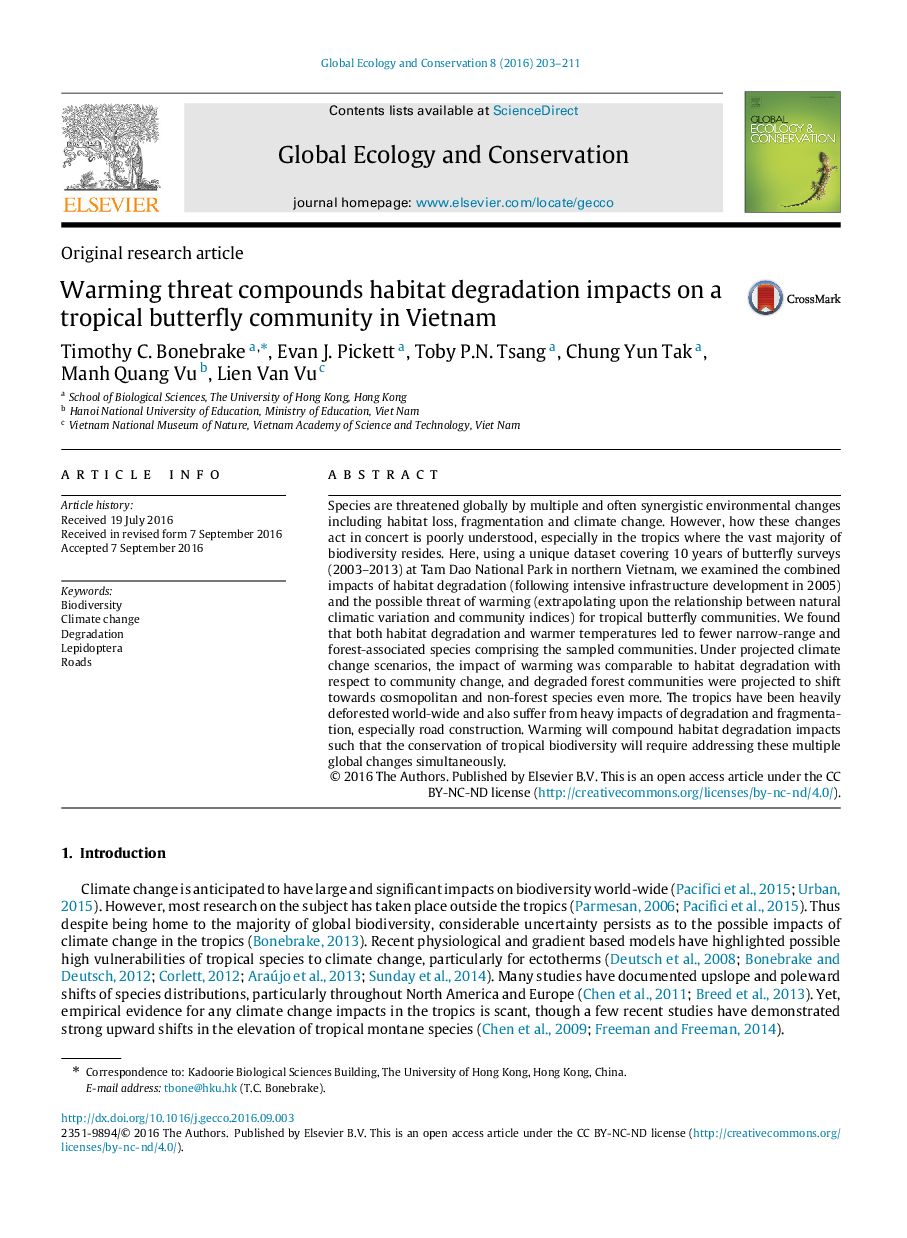| Article ID | Journal | Published Year | Pages | File Type |
|---|---|---|---|---|
| 4379446 | Global Ecology and Conservation | 2016 | 9 Pages |
Species are threatened globally by multiple and often synergistic environmental changes including habitat loss, fragmentation and climate change. However, how these changes act in concert is poorly understood, especially in the tropics where the vast majority of biodiversity resides. Here, using a unique dataset covering 10 years of butterfly surveys (2003–2013) at Tam Dao National Park in northern Vietnam, we examined the combined impacts of habitat degradation (following intensive infrastructure development in 2005) and the possible threat of warming (extrapolating upon the relationship between natural climatic variation and community indices) for tropical butterfly communities. We found that both habitat degradation and warmer temperatures led to fewer narrow-range and forest-associated species comprising the sampled communities. Under projected climate change scenarios, the impact of warming was comparable to habitat degradation with respect to community change, and degraded forest communities were projected to shift towards cosmopolitan and non-forest species even more. The tropics have been heavily deforested world-wide and also suffer from heavy impacts of degradation and fragmentation, especially road construction. Warming will compound habitat degradation impacts such that the conservation of tropical biodiversity will require addressing these multiple global changes simultaneously.
